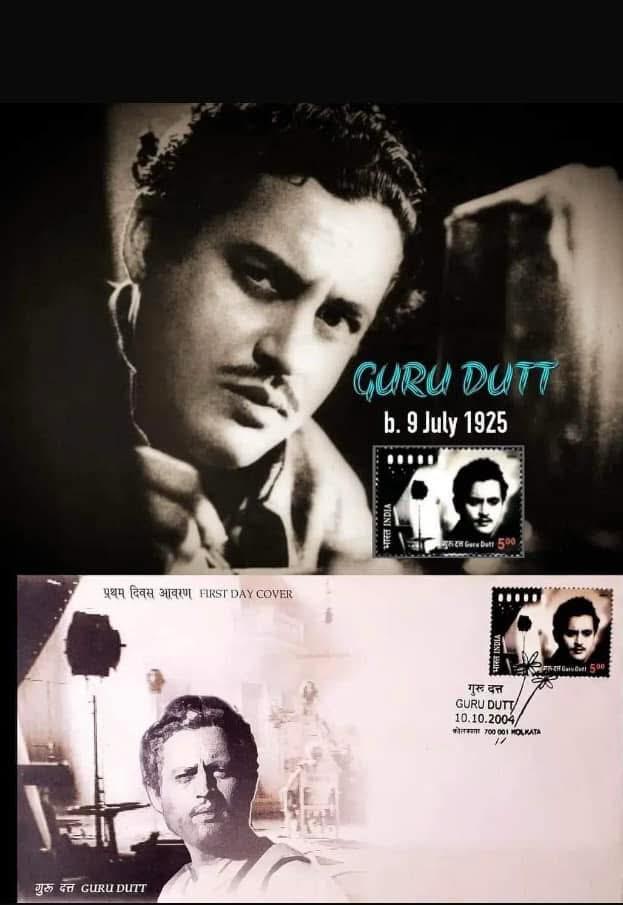
July 9, 2025, marks the 100th birth anniversary of Guru Dutt, a visionary whose films continue to resonate with audiences worldwide. This tribute honors his contributions to Indian cinema, reflecting on his life, artistry, and timeless masterpieces.
The Making of a Legend
Born Vasanth Kumar Shivashankar Padukone on July 9, 1925, in Padukone, Karnataka, Guru Dutt’s journey to becoming one of India’s greatest filmmakers was as dramatic as his films. A childhood accident prompted his family to rename him Guru Dutt, believing it to be auspicious—a decision that seemed to foreshadow his destined brilliance. Raised in a Konkani Hindu family, Dutt spent his early years in Kolkata’s Bhowanipore, where he became fluent in Bengali, a cultural influence that later enriched his storytelling. His sister, Lalita Lajmi, became a renowned painter, and his niece, Kalpana Lajmi, followed in his footsteps as a filmmaker.
Dutt’s entry into cinema was serendipitous. After a brief stint as a telephone operator in Calcutta, he moved to Bombay in 1944, where his uncle secured him a job at the prestigious Prabhat Film Company in Pune. There, he forged lifelong friendships with actors Dev Anand and Rehman, relationships that shaped his early career. Dutt’s versatility shone as he worked as a choreographer, assistant director, and actor, debuting in a small role as Sri Krishna in Chand (1944). His time at Prabhat, though brief, honed his craft and ignited his passion for filmmaking.
The Birth of a Visionary
Guru Dutt’s directorial debut, Baazi (1951), produced by Dev Anand’s Navketan Films, marked the arrival of a bold new voice in Indian cinema. Inspired by Hollywood’s film noir, Baazi introduced a morally ambiguous hero, a seductive femme fatale, and stark shadow lighting—elements that became Dutt’s signature. The film’s success cemented his partnership with Anand, leading to another hit, Jaal (1952). Their agreement—Dutt directing Anand’s films and Anand starring in Dutt’s—was a testament to their mutual respect, though creative differences with Anand’s brother, Chetan, later strained collaborations.
Dutt’s early films, including Baaz (1953), where he also starred, showcased his ability to nurture talent. He discovered comedian Johnny Walker, cinematographer V.K. Murthy, writer-director Abrar Alvi, and introduced Waheeda Rehman, whose ethereal presence became integral to his later works. Despite Baaz’s commercial failure, Dutt’s persistence paid off with the 1954 blockbuster Aar Paar, followed by hits like Mr. & Mrs. ’55 (1955) and C.I.D. (1956). These films established the “Guru Dutt team,” known for its innovative storytelling and technical excellence.
Masterpieces of Melancholy
Guru Dutt’s artistic peak came with Pyaasa (1957), a poignant tale of a poet’s struggle against an indifferent society. Starring Dutt and Waheeda Rehman, Pyaasa blended lyrical storytelling, soul-stirring music by S.D. Burman, and V.K. Murthy’s evocative cinematography. Its exploration of art, love, and betrayal struck a universal chord, earning it a place on Time magazine’s “All-TIME” 100 best movies list and the 2002 Sight & Sound poll. Dutt’s portrayal of the tormented poet Vijay remains one of cinema’s most iconic performances.
In 1959, Dutt poured his heart into Kaagaz Ke Phool, a semi-autobiographical tale of a filmmaker’s rise and fall. The film’s lavish production, innovative use of CinemaScope, and haunting score by S.D. Burman were groundbreaking, but its box-office failure devastated Dutt. The story of a director (played by Dutt) falling for an actress (Waheeda Rehman) mirrored his own life, adding layers of personal tragedy. Though initially panned, Kaagaz Ke Phool is now a cult classic, celebrated for its emotional depth and visual poetry. Its failure led Dutt to step back from officially directing, entrusting subsequent projects to others.
Triumphs Amid Turmoil
Despite Kaagaz Ke Phool’s commercial flop, Dutt bounced back with Chaudhvin Ka Chand (1960), a Muslim love triangle directed by M. Sadiq. Starring Dutt, Waheeda Rehman, and Rehman, the film’s title song, filmed in color, became iconic. Its success recouped the losses from Kaagaz Ke Phool, proving Dutt’s commercial acumen. In 1962, Sahib Bibi Aur Ghulam, directed by Abrar Alvi, won Dutt the Filmfare Best Director award. Featuring Meena Kumari’s career-defining performance, the film explored themes of decay and desire, cementing Dutt’s legacy as a storyteller of human complexities.
Dutt’s final acting role was in Sanjh Aur Savera (1964), opposite Meena Kumari. At the time of his death, he was working on Baharen Phir Bhi Aayengi, later completed with Dharmendra in the lead. Two other projects, Picnic and Love and God, remained unfinished, leaving behind what could have been further masterpieces.
A Tragic End and Lasting Impact
On October 10, 1964, Guru Dutt was found dead in his Bombay apartment, aged just 39. His death, attributed to a mix of alcohol and sleeping pills, remains debated as either suicide or an accidental overdose. His son, Arun Dutt, believed it was an accident, citing Dutt’s scheduled meetings the next day. Dutt’s personal life was fraught with challenges—his marriage to playback singer Geeta Dutt, whom he wed in 1953 after overcoming family opposition, deteriorated due to his heavy drinking, erratic hours, and rumored relationship with Waheeda Rehman. Geeta’s death in 1972 from liver damage compounded the tragedy. Their three children, Tarun, Arun, and Nina, were raised by relatives.
Dutt’s films, however, transcended his personal struggles. His ability to blend artistic ambition with commercial success set him apart from contemporaries like Raj Kapoor and Bimal Roy. Pyaasa and Kaagaz Ke Phool ranked among the top 160 films in the 2002 Sight & Sound poll, while Dutt himself was listed as the eighth-highest-ranked Asian director. India Post honoured him with a postage stamp in 2004, and documentaries like Channel 4’s In Search of Guru Dutt and Door darshan’s 2011 tribute have kept his legacy alive.
A Timeless Legacy
Guru Dutt’s cinema was a mirror to the human soul, capturing love, loss, and longing with unparalleled sensitivity. His films broke new ground in Hindi cinema, introducing genres, techniques, and talents that continue to inspire filmmakers. From the gritty realism of Baazi to the poetic melancholy of Pyaasa, Dutt’s work remains a benchmark for storytelling. His mentorship of talents like Waheeda Rehman and V.K. Murthy underscores his role as a visionary who shaped Indian cinema’s golden era.
As we celebrate his centenary, Guru Dutt’s films remind us of cinema’s power to transcend time. His legacy endures not just in the frames of Kaagaz Ke Phool or the verses of Pyaasa, but in the hearts of audiences who find solace in his art. In an industry often driven by commerce, Dutt dared to dream, leaving behind a body of work that remains, like his films’ titles, as eternal as the “flowers of paper” or the “thirst” of a poet’s soul.
[Hasnain Naqvi is a former member of the history faculty at St. Xavier’s College, Mumbai]





